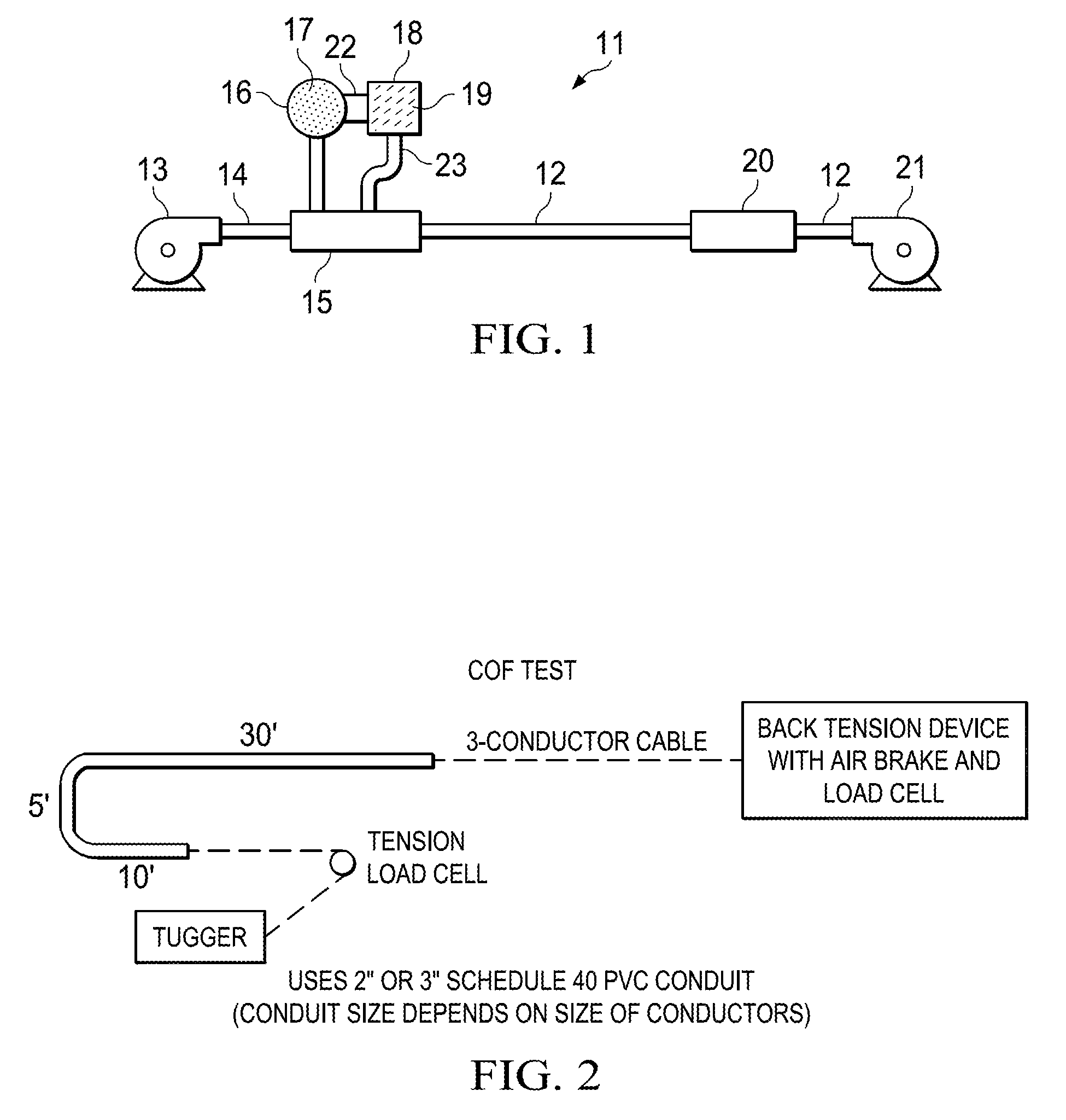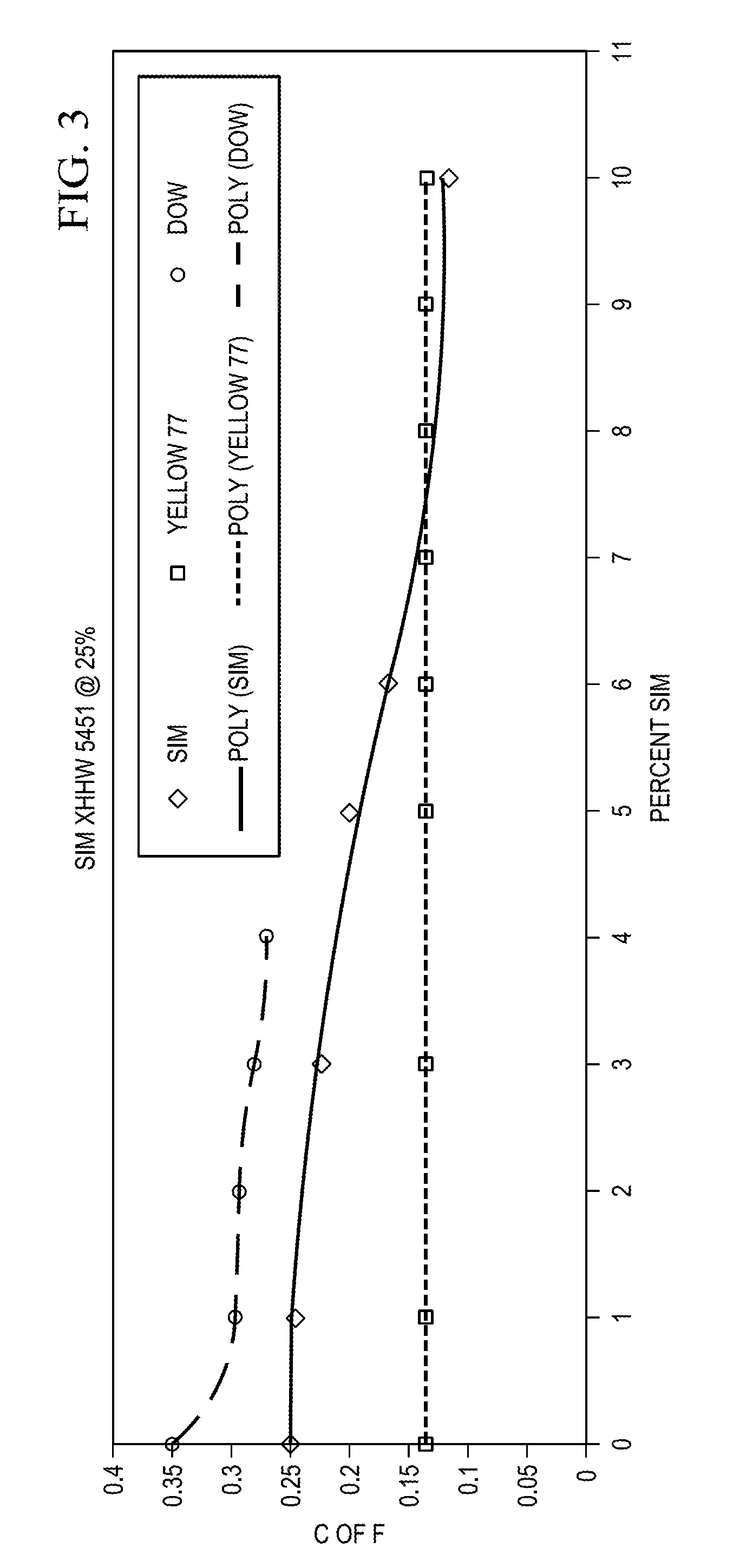Electrical Cable Having Crosslinked Insulation With Internal Pulling Lubricant
a cross-linked insulation and electrical cable technology, applied in the direction of rigid containers, packaging, bottles, etc., can solve the problems of requiring a large pulling force, physical damage, degradation of the cable, etc., and achieve the effects of reducing the coefficient of friction of the outer surface of the cable, reducing the pulling force, and high viscosity
- Summary
- Abstract
- Description
- Claims
- Application Information
AI Technical Summary
Benefits of technology
Problems solved by technology
Method used
Image
Examples
examples
[0032]The following examples are presented to further illustrate the present invention and are not to be construed as limiting the invention.
example i
[0033]Various cable sheath compositions were formulated in accordance with the present invention for testing as described in more detail below. As shown in Table I, a polymeric resin of crosslinkable silane-ethylene copolymer (commercially available from Dow Chemical Company under the trade designation Si-Link™ AC DFDB-5451 NT) was initially blended with a 25% concentration of high viscosity silicone (polydimethylsiloxane) to yield a carrier-impregnated resin containing various percentages of pulling lubricant in the final mixture as indicated in Table I. With respect to all samples (except V-Y), the carrier-impregnated resin was coextruded with a pre-grafted polyethylene resin (commercially available from Padanaplast USA, Inc. under the trade designation A-3001) as well as a flame retardant / catalyst (commercially available from Padanaplast USA, Inc. as CAT005FR), and a color concentrate (commercially available from Dow Chemical Company under the trade designation DFNC-0039 BK). The...
example ii
[0034]Referring now to FIG. 2, diagrammatically illustrated is the apparatus used to determine coefficient of friction for a given cable being pulled in conduit. The coefficient of friction test apparatus was developed to give a consistent way to determine the input values necessary to use the industry-standard program published by PolyWater Corporation to calculate a real-world coefficient of friction for a given cable being pulled in conduit. Given the inputs for the conduit setup, the back tension on the wire, and the pulling tension on the pulling rope, this program back-calculated a coefficient of friction for the cable by subtracting the back tension from the pulling tension and attributing the remaining tension on the rope to frictional forces between the cable and the conduit.
[0035]As shown in FIG. 2, the overall setup used a pulling rope threaded through ˜40′ of PVC conduit (appropriately sized for the cable being pulled) with two 90° bends, the ...
PUM
| Property | Measurement | Unit |
|---|---|---|
| temperature | aaaaa | aaaaa |
| weight percent | aaaaa | aaaaa |
| shape | aaaaa | aaaaa |
Abstract
Description
Claims
Application Information
 Login to View More
Login to View More - R&D
- Intellectual Property
- Life Sciences
- Materials
- Tech Scout
- Unparalleled Data Quality
- Higher Quality Content
- 60% Fewer Hallucinations
Browse by: Latest US Patents, China's latest patents, Technical Efficacy Thesaurus, Application Domain, Technology Topic, Popular Technical Reports.
© 2025 PatSnap. All rights reserved.Legal|Privacy policy|Modern Slavery Act Transparency Statement|Sitemap|About US| Contact US: help@patsnap.com



